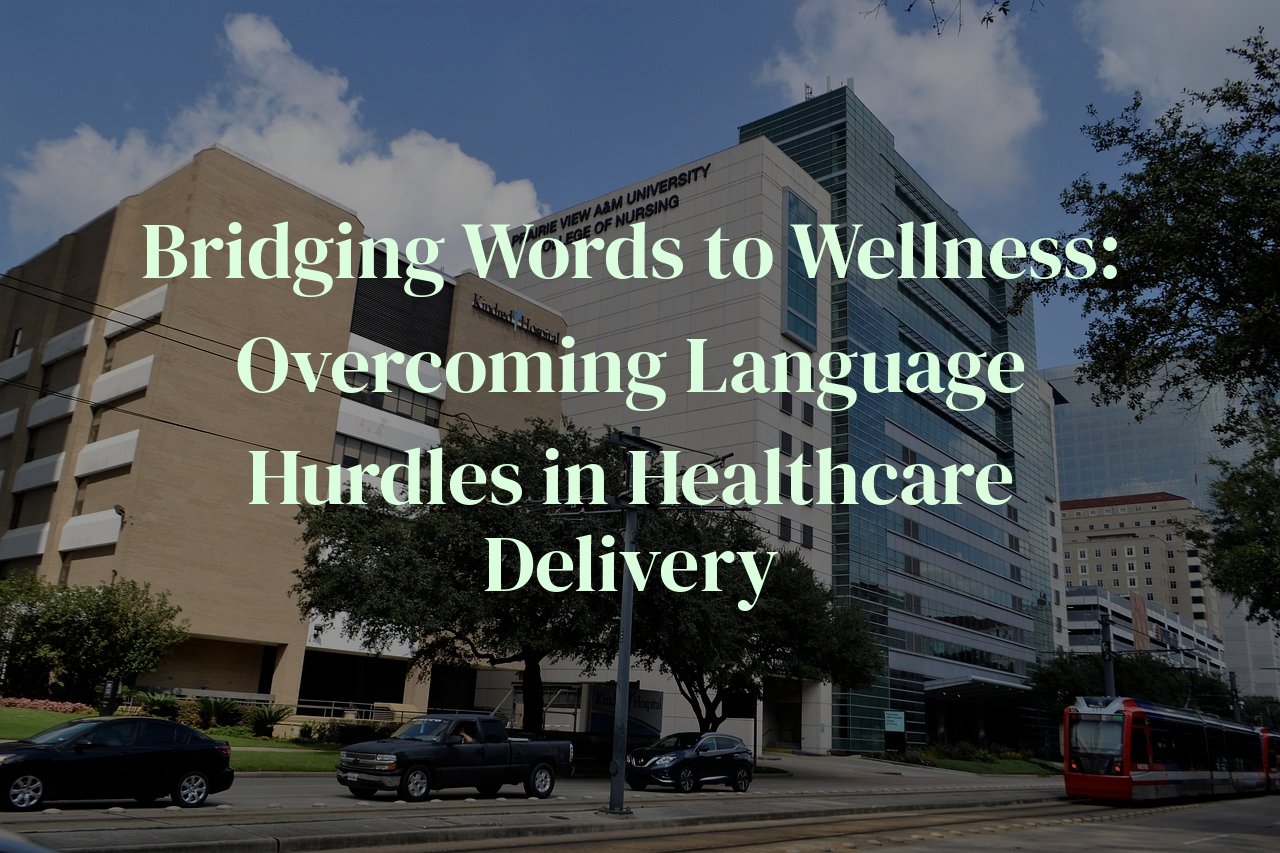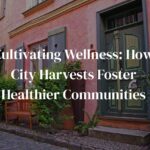
As we journey through the maze of healthcare systems, understanding and being understood is more than a convenience—it’s a lifeline entwined with the quality of patient care. This blog explores the complexities and the pivotal role of communication, especially when language differences come into play within medical settings. By delving into this topic, readers will gain insight into the numerous strategies and available resources aimed at transcending linguistic barriers, all geared toward improving patient outcomes and facilitating better healthcare experiences.
The discussion is tailored to not only highlight challenges but also to empower patients and healthcare providers with essential knowledge and tools. The insights presented here are crafted from personal interactions with the nuanced healthcare landscape and aims to serve as a beacon for those seeking to foster a more inclusive and effective patient care environment.
Table of Contents
Deciphering Symptoms: The Patient’s Voice in Different Tongues
In the realm of healthcare, where the precision of symptoms can guide treatment plans, the challenges of understanding a patient’s voice across language barriers become palpable. One afternoon, I remember an elderly woman, a native Tagalog speaker, clutching her chest and struggling to articulate the heaviness that oppressed her breath. The nuances of her symptoms, obscured by our linguistic disconnect, initially led us down a path of misdiagnosis. It wasn’t until a bilingual nurse intervened that we understood she was describing a radiating pain — a crucial clue pointing to angina rather than respiratory distress.
As healthcare providers, we’re often armed with a series of questions, common across any tongue — ‘Where does it hurt?’ or ‘How intense is the pain?’ Yet, these inquiries become complex riddles when patients describe pain as ‘pounding’ versus ‘stabbing,’ or use metaphors embedded in cultural context for expression. For instance, in some Hispanic cultures, ‘susto’ (fright or panic) may not only portray a psychological state but also a somatic experience, requiring culturally nuanced interpretation for effective treatment.
Children, in particular, require a delicate touch, their descriptions of pain often imaginative — ‘My stomach is angry’ or ‘My head has lightning.’ A skilled interpreter can be a bridge to their world, aligning a child’s imaginative vocabulary with clinical symptoms, ensuring their voice isn’t lost in a sea of medical jargon.
Traversing the intricate web of language to understand each patient’s story is a testament to the compassion inherent in healthcare. I recall a non-English speaking man, his frustration palpable as he repeatedly gestured to his abdomen, the discomfort clear but the details elusive. Through the painstaking process of utilizing translation services, we unearthed a history of gastritis exacerbated by certain foods—a detail easily lost in translation but found through patience and care.
The dance of tongues in healthcare is a delicate ballet of words and gestures, a continuous learning curve for providers like myself, buttressed by the art of listening beyond words and embracing the silence embedded with meanings, leading to a symphony of understanding that resonates with the true needs of our patients.
The Translation of Trust: Building Rapport with Multilingual Patients
In the journey toward healing, trust is the compass that guides the patient-provider relationship. When navigating the complex labyrinth of healthcare, especially with multilingual patients, building a bridge of trust can be as intricate as learning a new language itself. It begins with the fundamental understanding that communication extends beyond words. For example, as a healthcare provider, I recall an encounter with an elderly gentleman whose native tongue was not English. The crinkle of worry etched upon his brow eased when I approached with not just a translator, but with a demeanor of patience and attentiveness. The trust we built transcended the language barrier.
Establishing this critical trust involves a symphony of non-verbal cues, active listening, and cultural sensitivity. Gestures and expressions often speak louder than words, laying a non-verbal groundwork upon which trust can be established. It may be a gentle nod, an empathetic smile, or the attentive tilt of the head that can communicate care before a single word is translated. In my practice, I found that even before interpreters relayed my words, my actions had already begun to convey my intent.
Active listening is another cornerstone in crafting trust. It demands focus not solely on the words being translated but also on the emotions and context carried alongside them. I once treated a young mother who, through a translator, described her symptoms mechanically. It was the underlying note of anxiety in her voice that clued me into the severity of her condition, prompting immediate attention. Without tuning into those subtleties, vital information could have been lost in translation.
The fabric of trust is also interwoven with cultural competence, recognizing and respecting the patient’s cultural background. Acknowledging traditional health beliefs and understanding cultural-specific healthcare practices can go a long way in establishing rapport. Whether it’s being mindful of dietary restrictions or understanding familial roles in decision-making, these cultural considerations are as paramount as the medical information shared.
Indeed, embracing the multiplicity of languages in healthcare delivery is a complex challenge. However, the reward of a trust-laden relationship leads to a more accurate diagnosis, higher patient satisfaction, and ultimately, better health outcomes. It was always gratifying to realize that my efforts to connect with patients, irrespective of the language we speak, culminated in a deeper, more meaningful engagement that often translated into improved wellness.
Literature and Guides: Navigating Linguistic Resources in Healthcare
Embarking on the voyage through healthcare’s linguistic maze, one quickly realizes the lighthouse role played by a plethora of literature and guides designed to illuminate the path. As a someone delving deep into this terrain, I’ve encountered practical resources tailored for professionals and patients alike, each serving as a beacon through the dense fog of language barriers.
Firstly, medical glossaries and dictionaries in multiple languages have been invaluable assets. These compendiums aren’t just lists of words; they are cultural bridges, contextualizing medical terminology into the patient’s linguistic and cultural backdrop. From my perspective, witnessing a healthcare provider pull out a translated medical phrasebook to explain a diagnosis has been a testament to their commitment to care.
The development and deployment of visual aids also play a critical role in transcending linguistic obstacles. Pictogram-based instructions for medication or treatment procedures offer a universal language, ensuring key messages are not lost in translation. Patients’ faces light up with understanding, confirming that a picture is indeed worth a thousand words – or perhaps in these cases, a thousand interpretations.
Educational materials and consent forms designed for multi-language accessibility act as silent advocates for inclusivity. From witnessing firsthand a Spanish-speaking mother comfortably navigating the consent process for her child’s treatment, it’s glaringly evident how these materials can transform a scenario from daunting to manageable.
Let’s not forget the digital realm where apps and online translation services have sprung up, armed with algorithms and human expertise, ready to assist in real-time. The relief that washes over a patient when they realize that their smartphone can serve as an interpreter is palpable, easing the strain of communication and enabling a focus on healing.
Finally, personalized guides for specific communities have proven to be powerful. These are more than leaflets or brochures; they embody a sense of belonging. Whether it’s resources aimed at elderly immigrants or tailored towards refugees, seeing individuals find resonance in information that speaks their language – both literally and figuratively – has highlighted the profound impact of nuanced literature in healthcare.
Effectuating Policies: Addressing Language Disparities at Institutional Levels
Language barriers in healthcare can be a matter of life or death. Hence, it’s crucial that healthcare institutions implement policies that bridge these linguistic gaps. My first-hand experience with patients who struggled to communicate their symptoms has only reinforced my belief in the need for comprehensive language services. One of the most effective policies I’ve seen in action is the adoption of a Language Access Plan (LAP). This is not just a guideline but a binding commitment to provide interpreters and translation services for patients of diverse linguistic backgrounds. An LAP ensures that language support is a recognized right, not an afterthought.
Moreover, staff training programs are instrumental in equipping health care professionals with the tools to identify and adequately address language needs. These programs often include cultural competency training to ensure that medical staff are not only linguistically but also culturally attuned to their patients. The effectiveness of these programs is palpable in the moments when a nurse reassures a scared patient or when a doctor fully grasps the gravity of a patient’s symptoms, all through the seamless work of interpreters and translators who have become integral members of the healthcare team.
Partnerships with community organizations have also proven indispensable. They serve as a bridge, providing insights into the specific language needs of the community. These collaborations help inform the creation of multilingual health education materials, thus empowering patients to engage in their healthcare more effectively, a goal that resonates deeply with my personal mission to advocate for patient empowerment through knowledge.
Tech advancements, including telehealth platforms with built-in multilingual options and translation apps, are also reshaping policy frameworks. Institutions adopting these technologies are pioneering a digital inclusivity that seems light-years ahead of the days when patients would muddle through appointments with only a bilingual relative or an overworked staff member’s limited second language skills.
I’ve seen the tangible benefits of these policies through the grateful eyes of patients who could finally understand their treatment plans and through the relief of healthcare providers able to convey critical information. It’s a reminder of the profound impact effective communication has on patient outcomes and how institutional commitments at policy levels can actively break down the language barriers that compromise patient care.
Personal Stories: Experiences with Language Hurdles in Healthcare
In my years of interacting with various health systems, I’ve amassed quite a collection of poignant narratives underscored by linguistic obstacles. One particularly impactful recount comes from a close friend who navigated a severe asthma attack in a foreign country. His grasp of the local dialect was tenuous at best, leading to delay and confusion in emergency response. Nurses scrambled for a translator while precious seconds ticked by, a chilling testament to how critical moments can hinge on the thread of communication.
Another narrative involves an elder in a community health center who primarily spoke an indigenous language. Healthcare providers struggled to decipher her explanations of ancestral remedies and dietary intricacies contributing to her chronic condition. It was only through the persistent efforts of a culturally-sensitive interpreter that her voice found resonance, highlighting the gulf between medical knowledge and traditional wisdom, and the bridge that multilingual competence can provide.
Similarly, a deaf patient’s experience left an indelible mark on my understanding of language hurdles. Although American Sign Language was his mode of communication, the absence of an interpreter led to compromised care. Passporting from one specialist to another, his anxiety magnified by each encounter misinterpreted or prolonged due to the communication gap. The narrative starkly illustrated that language barriers aren’t confined to spoken tongues alone; they extend to the realm of signing, facial expressions, and body language all the same.
Furthermore, a colleague recounted an interaction with a mother whispering symptoms in a hesitant mixture of broken English and her native language. The mother’s fear of misrepresentation or dismissal, coupled with the healthcare team’s limited ability to understand her concerns fully, created an environment ripe for misdiagnosis. It took a compassionate healthcare worker’s creative use of drawings and non-verbal cues to break down the walls of miscommunication and embark on a path to healing.
Each of these stories commands a deep look into the human aspect of healthcare delivery, casting a bright light on the need for improved linguistic inclusivity. They illustrate not only the challenges but also the opportunities for healthcare providers to grow and adapt in ways that honor every patient’s voice, affirm their dignity, and uphold the highest standards of care.
Conclusion
In conclusion, the path to superior healthcare is paved with clear communication channels, sensitivity to cultural and linguistic diversity, and a relentless commitment to patient-centered care. While language barriers pose significant challenges, they are not insurmountable. The collective journey toward accessible and equitable healthcare progresses each time we succeed in bridging linguistic gaps, one word at a time, turning linguistic barriers into bridges for better health outcomes.



